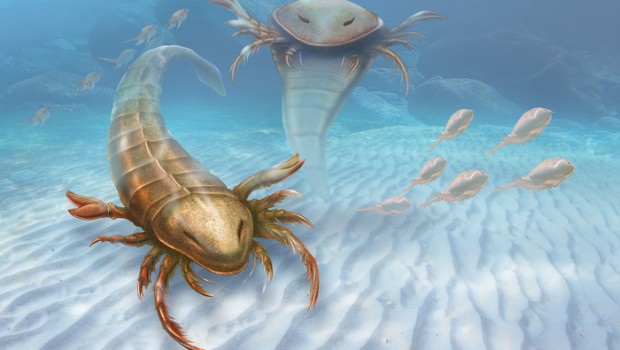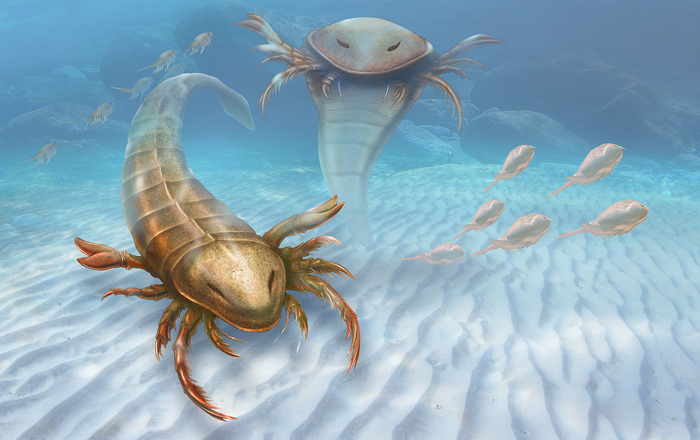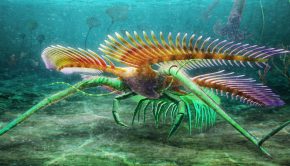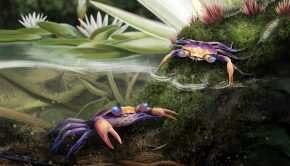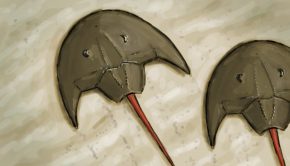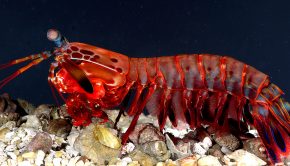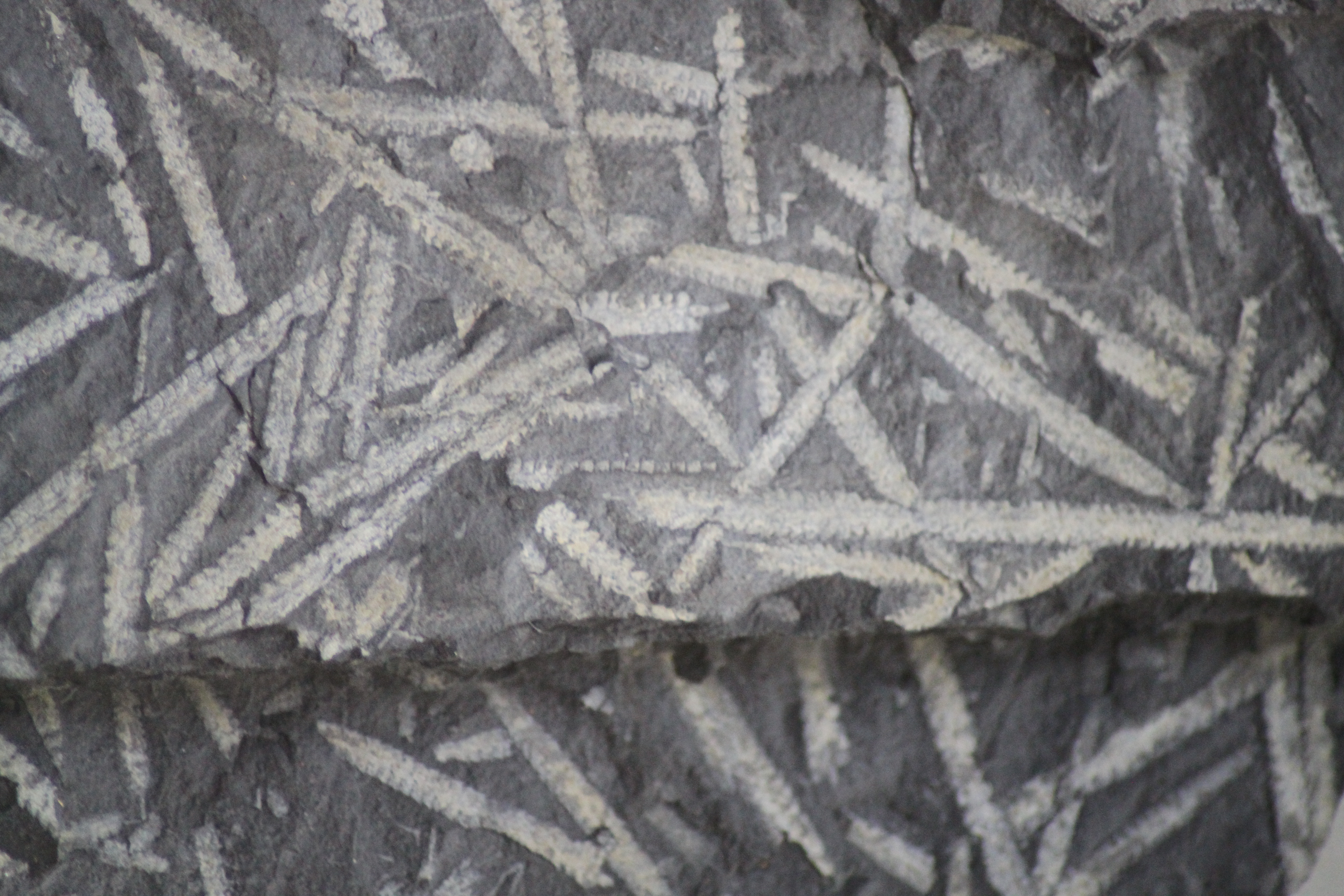Episode 51: Eurypterids
Eurypterids, or ‘sea-scorpions’ are an extinct group of chelicerates: the group containing the terrestrial arachnids (such as spiders and scorpions) and the aquatic ‘merostomes’ (represented today solely by the horseshoe crabs). They bear a gross-morphological resemblance to scorpions (hence the informal name) but, in being aquatic, may have shared more in common with horseshoe crabs. They inhabited the waters of the Paleozoic Era and were typically scavengers or predators. Most eurypterids were quite small and unremarkable, but some genera, such as Pterygotus and Jaekelopterus grew to incredible sizes; the latter reached an estimated 2.5m (8’ 2”) and is still the world’s largest-known arthropod.
Described today in BMC- Evolutionary Biology is the oldest-yet-described eurypterid Pentecopterus decorahensis and we’ve got lead author Dr James Lamsdell, Yale University, to introduce us to the eurypterids and to discuss the significance of this new genus.
Podcast: Download (Duration: 1:19:03 — 108.6MB)
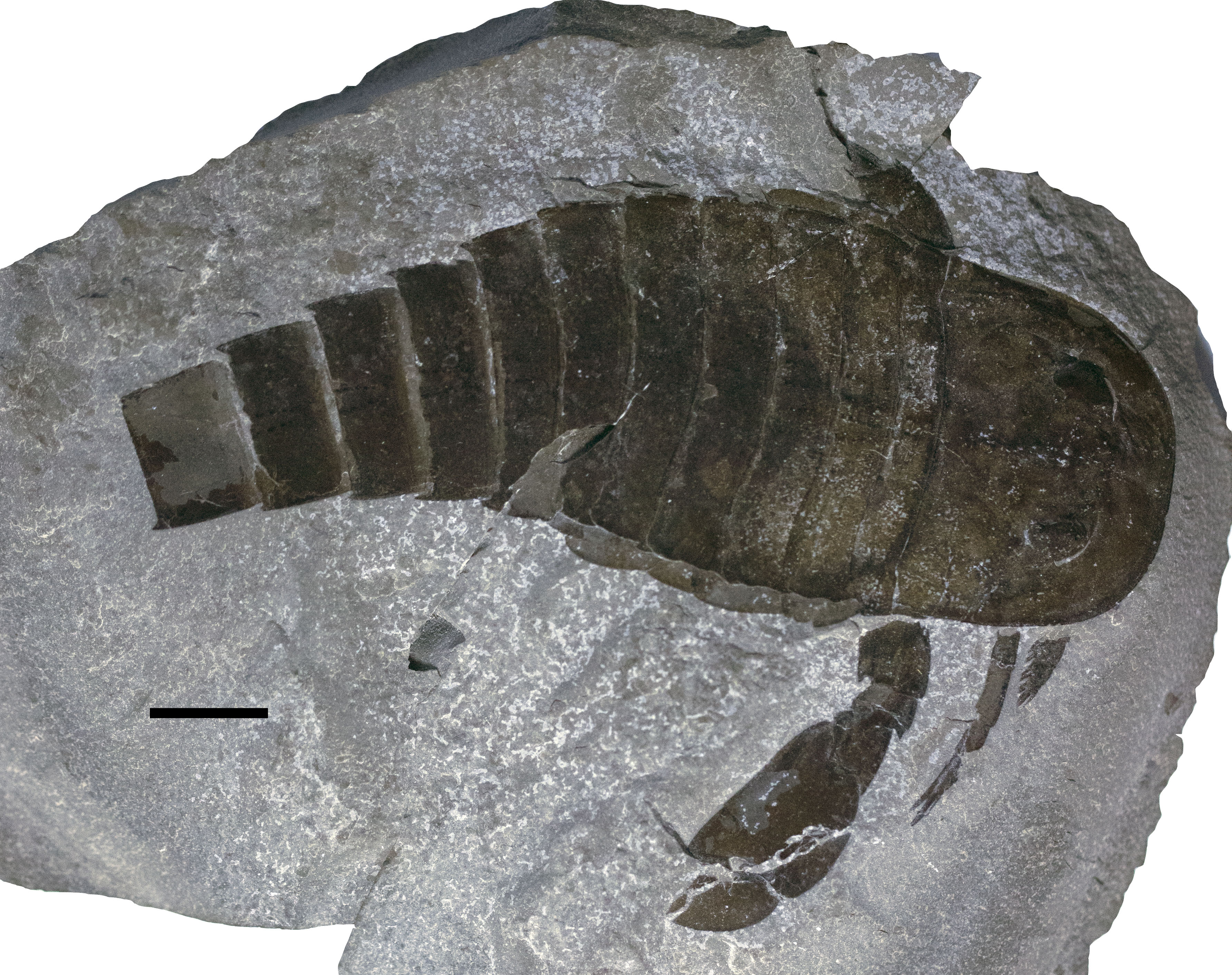
There exist over 250 individual species of eurypterid, but the vast majority of specimens discovered are of the genus Eurypterus. This genus is often considered the ‘standard’ morphology of eurypterid. It is interpreted as a swimming form by the expanded paddle-shaped appendage at the back of the head.
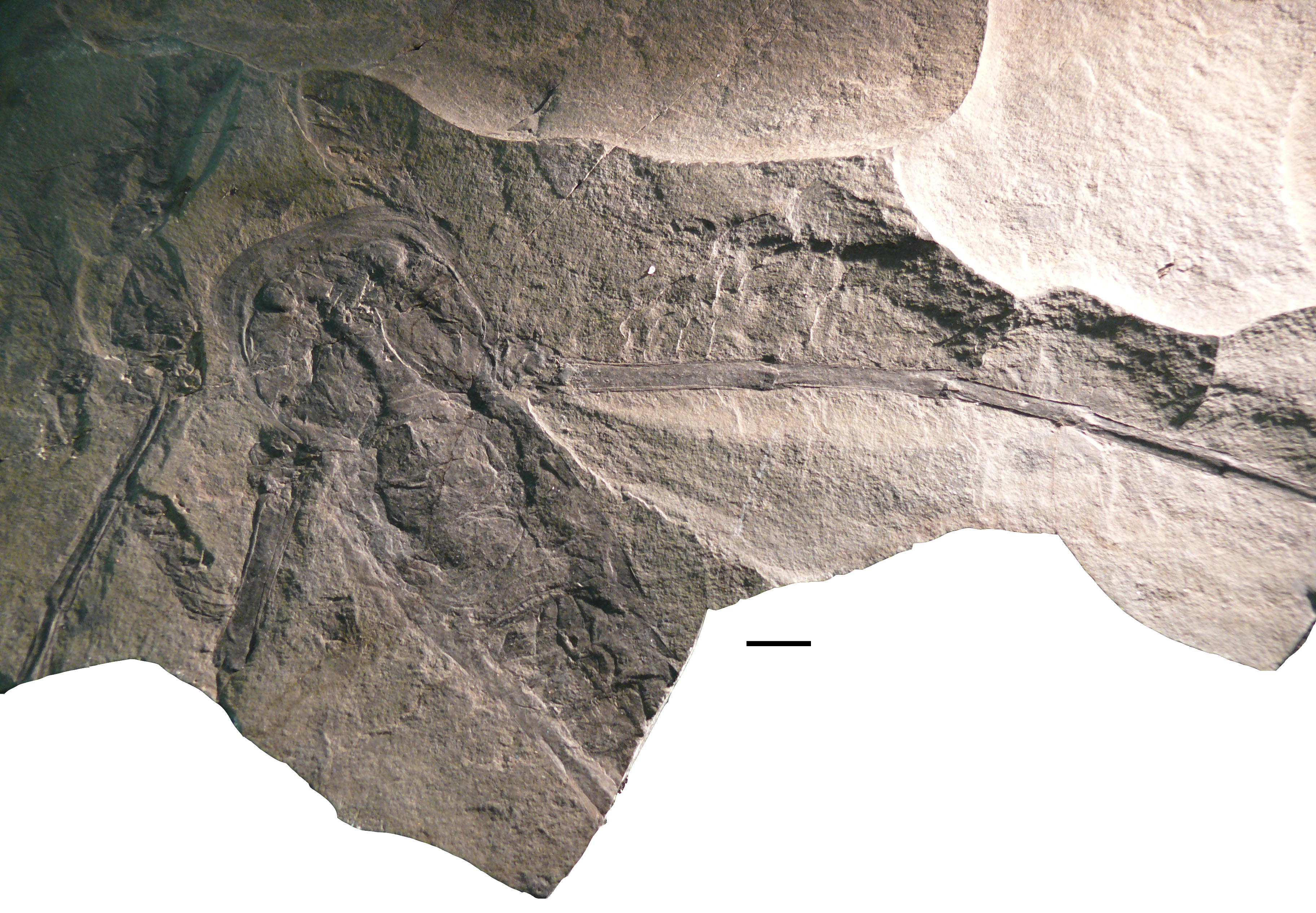
Other eurypterids, known as stylonurids, possessed large walking legs at the back of the head instead of paddles and would not have been able to have swum. This differentiation of the last pair of limbs helps distinguish the two major eurypterid groups. Stylonurella displays exceptionally long and slender appendages.
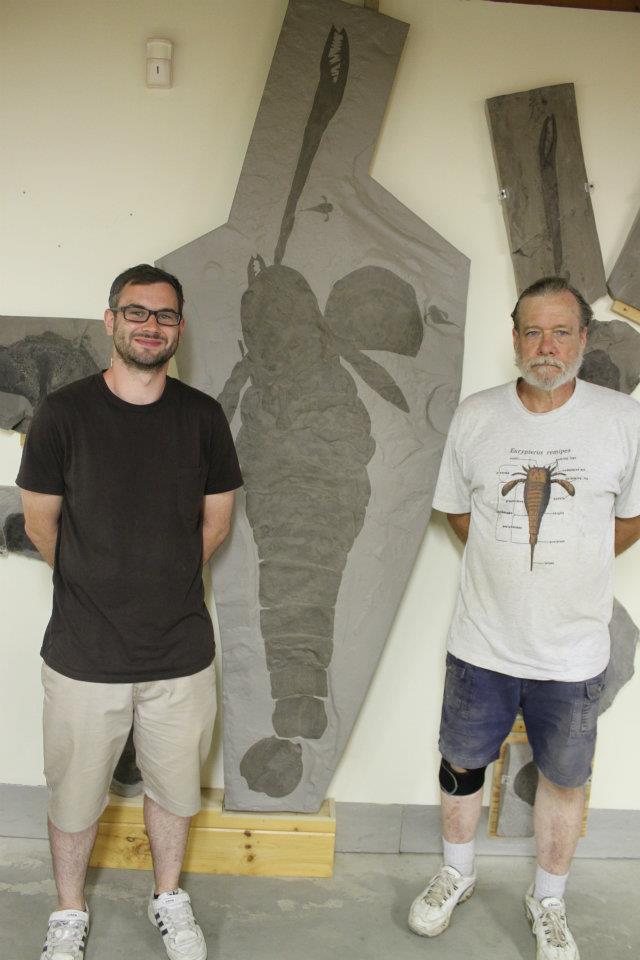
Pterygotid eurypterids were extremely large predatory forms. Their chelicerae, usually reduced into little more than fangs in most chelicerates, were greatly expanded to form large ‘claws’. Note the two smaller Eurypterus specimens surrounding the head. Image credit and scale: Dave Marshall, taken at Lang’s Eurypterid Quarry, New York.
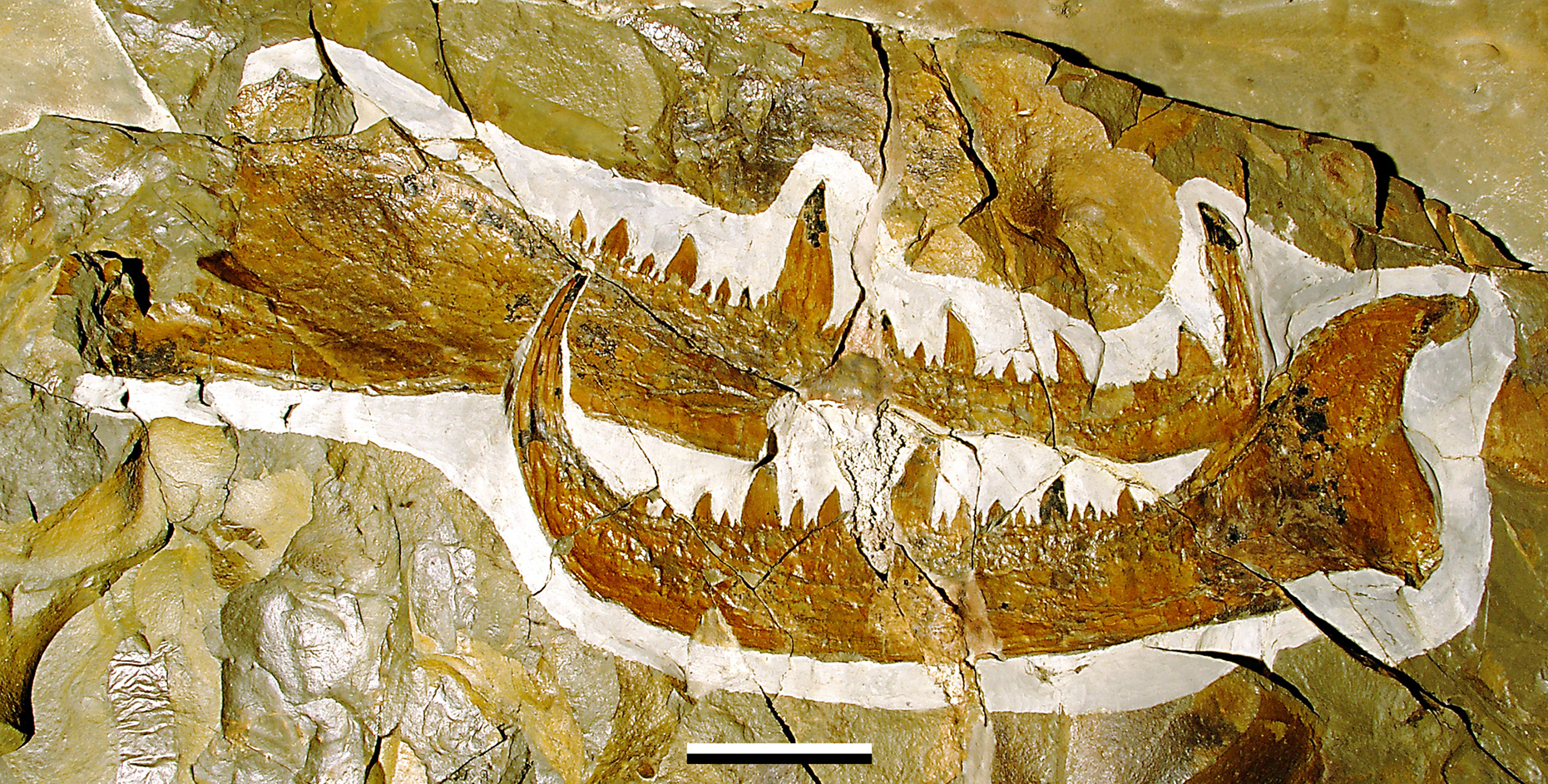
Jaekelopterus rhenaniae is a pterygotid eurypterid and, at 2.5 m (8′ 2″), is the largest arthropod ever known. This largest specimen (pictured) is known from just the chelicerae, which would have appeared as in the picture above. These were compared to other specimens and a full body size estimated. Scale bar 5 cm. Image credit: Marcus Poschmann.
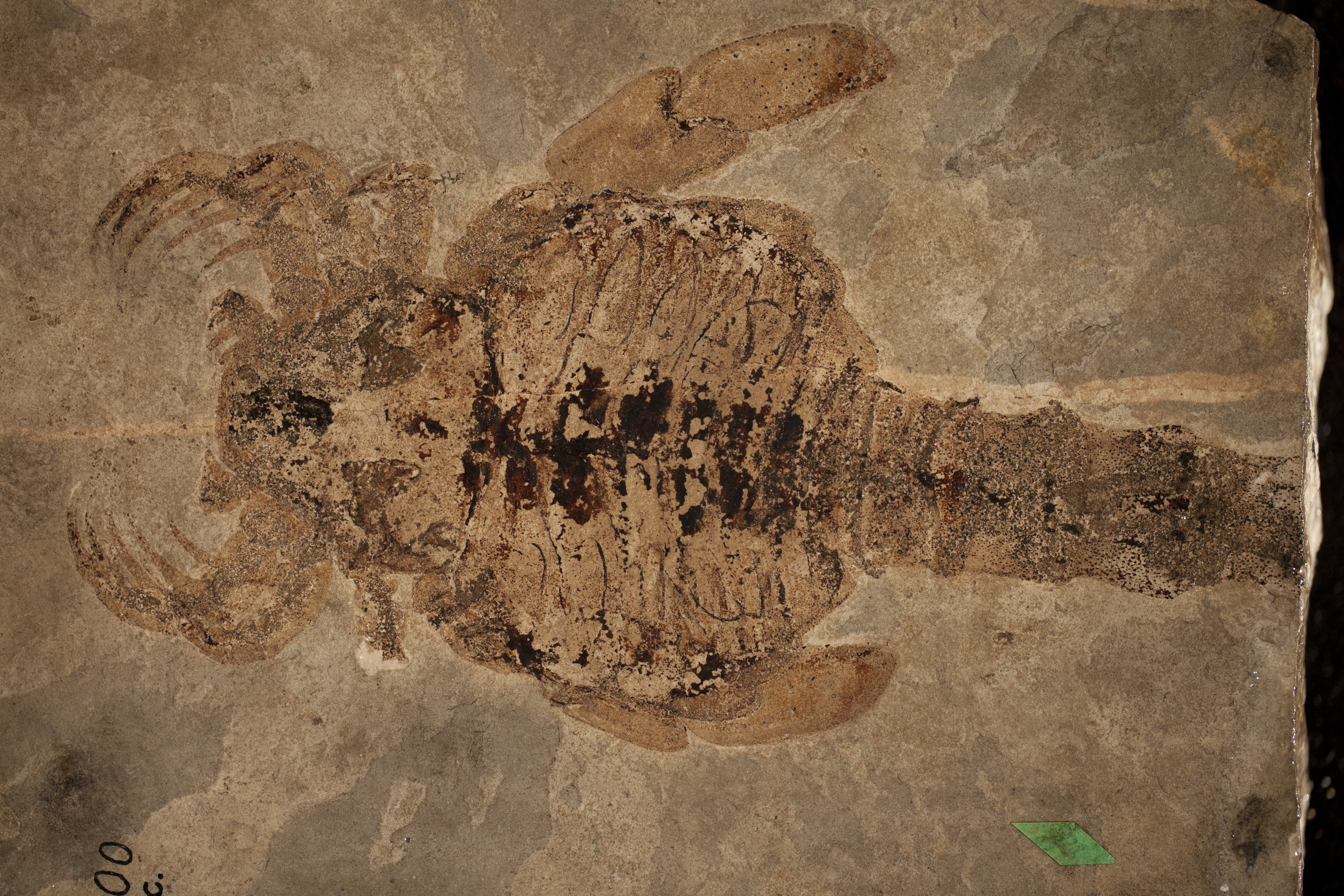
Some forms, such as Carcinosoma newlini, were evidently hyper-predatory and bore an array of large appendages with inward-pointing spines, perfect for the ambush of prey.
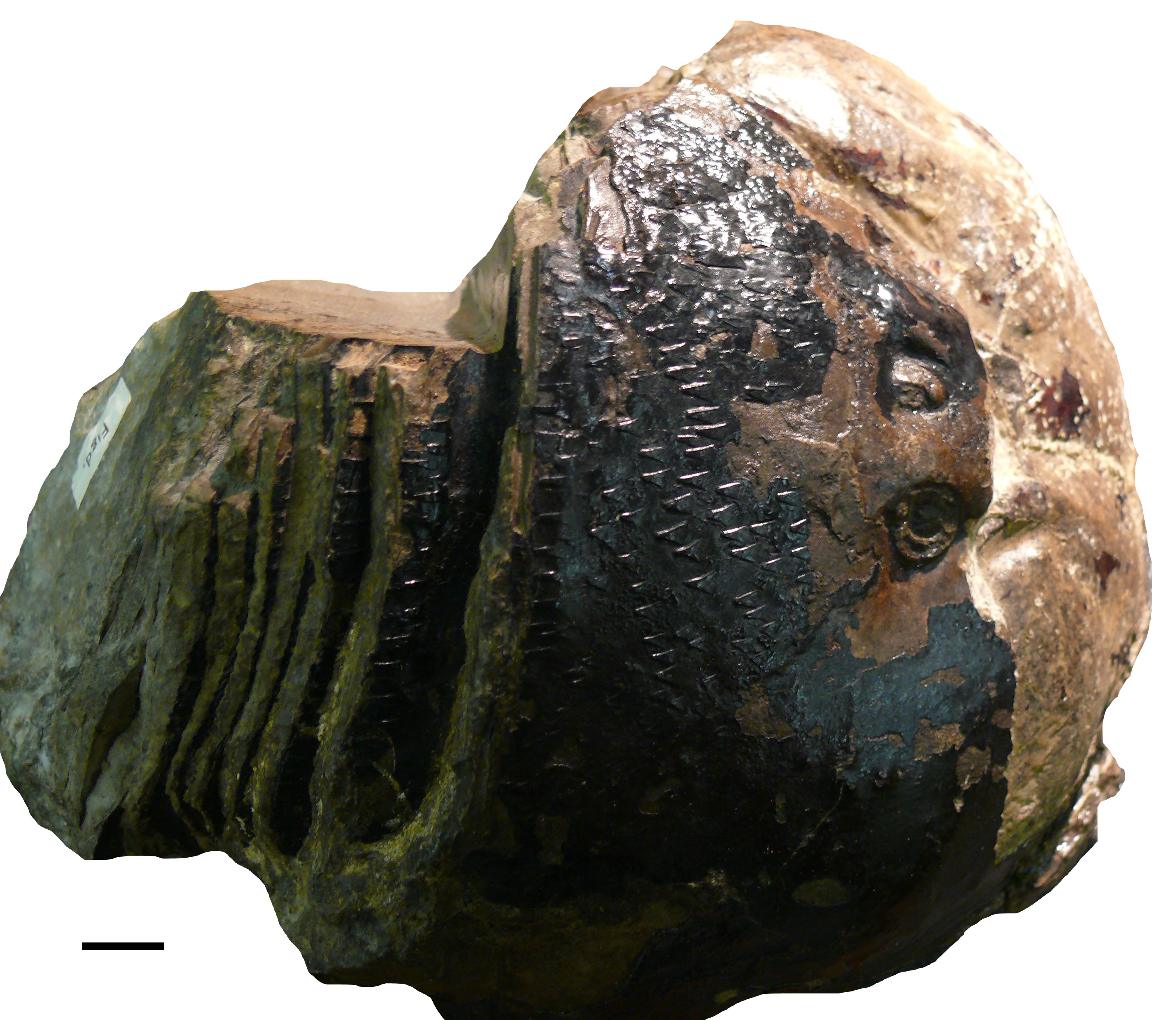
Hibbertopturus was a large and robust genus. It employed a sweep-feeding strategy and combed the surfaces of river beds its front appendages for food. This was one of the last eurypterids to go extinct, probably during the Permo-Triassic mass extinction.
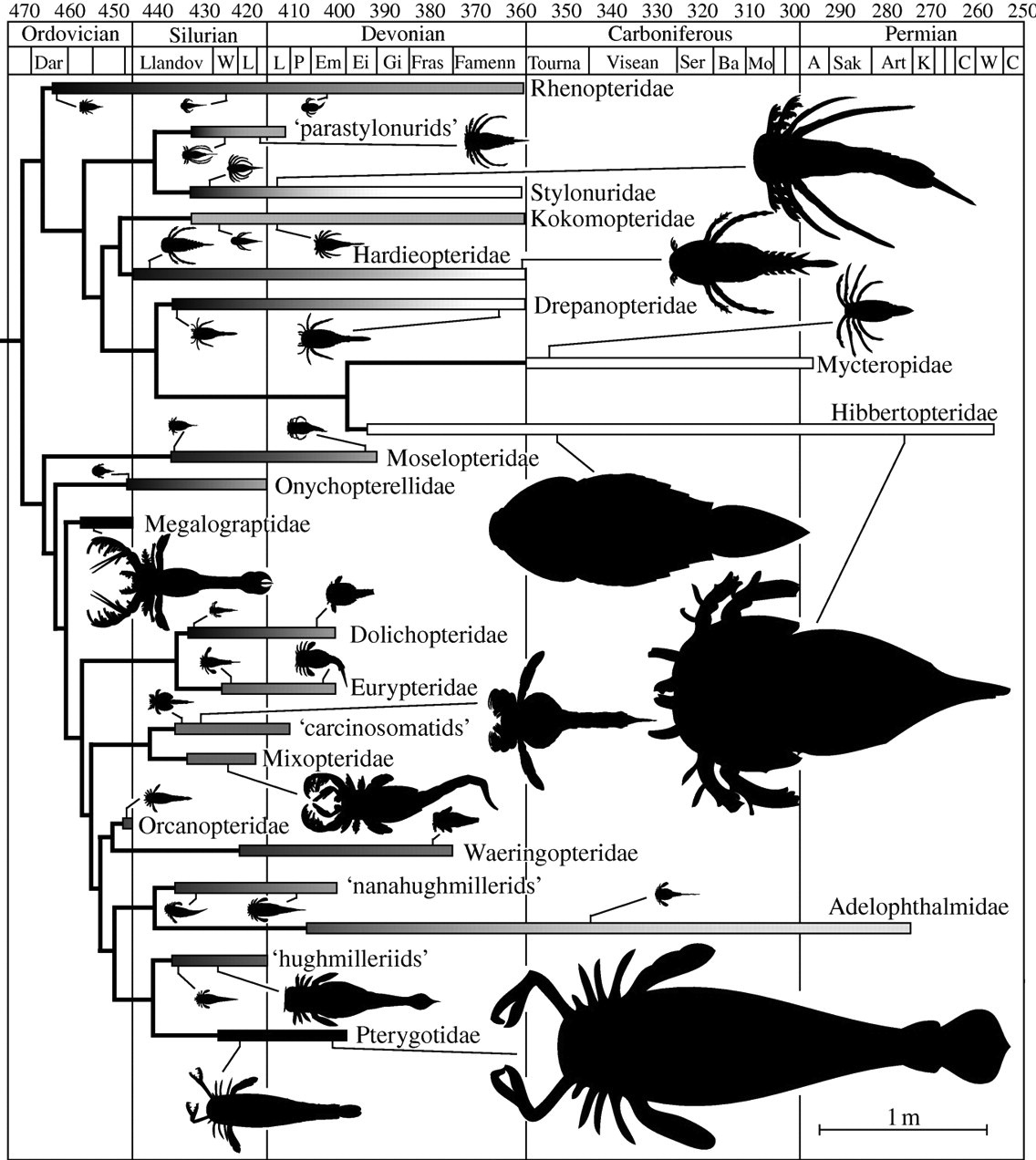
An older view of the eurypterid evolutionary tree, with size comparisons. The first branch of the tree separates the walking (top half) and the swimming forms (bottom half). Note the position of Megalograptidae close to the base of the swimming forms.
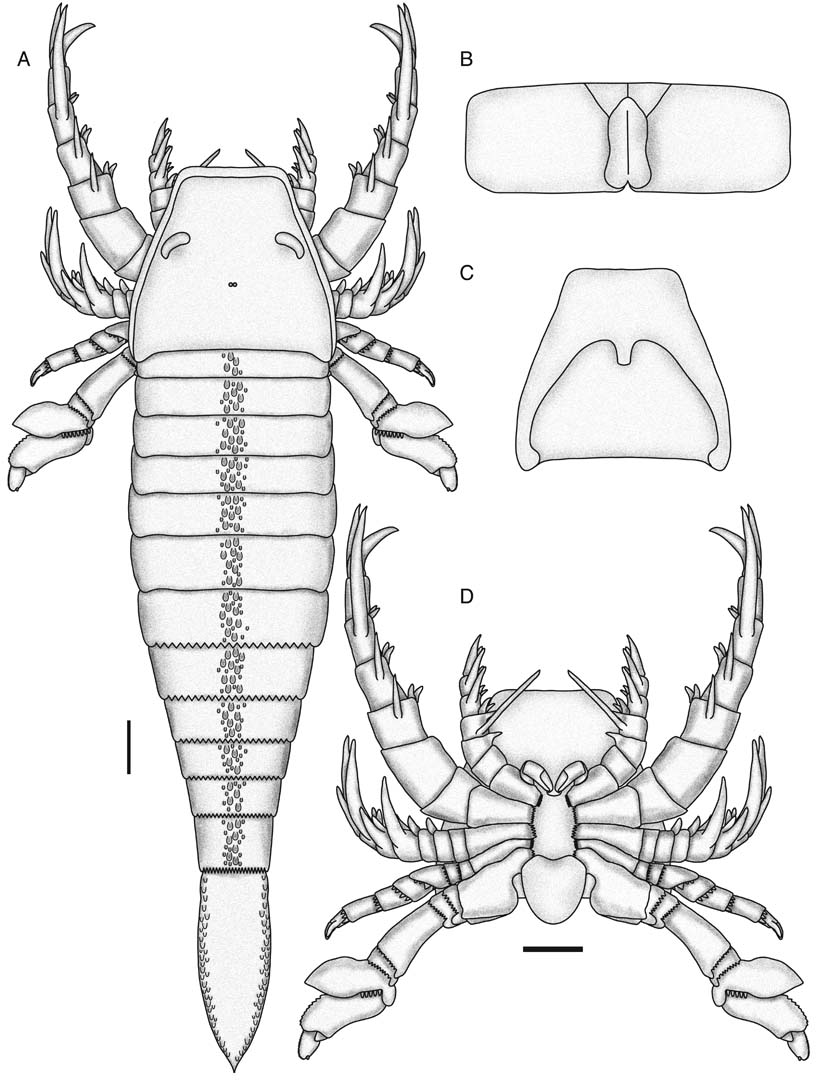
Described today is the oldest-yet discovered eurypterid: Pentecopterus decorahensis. It was found in the Winneshiek lagerstätte (site of special preservation) close to Decorah, Iowa, USA. Dated at 467.3 – 458.4 million years old (Middle Ordovician), it predates the previous oldest by 9 million years. A, Dorsal view of a complete specimen. B, Genital segment. C, Ventral view of head shield. The semi-circular area is where the appendages would have inserted. D, Ventral view of head shield with appendages in place. Scale 10 cm
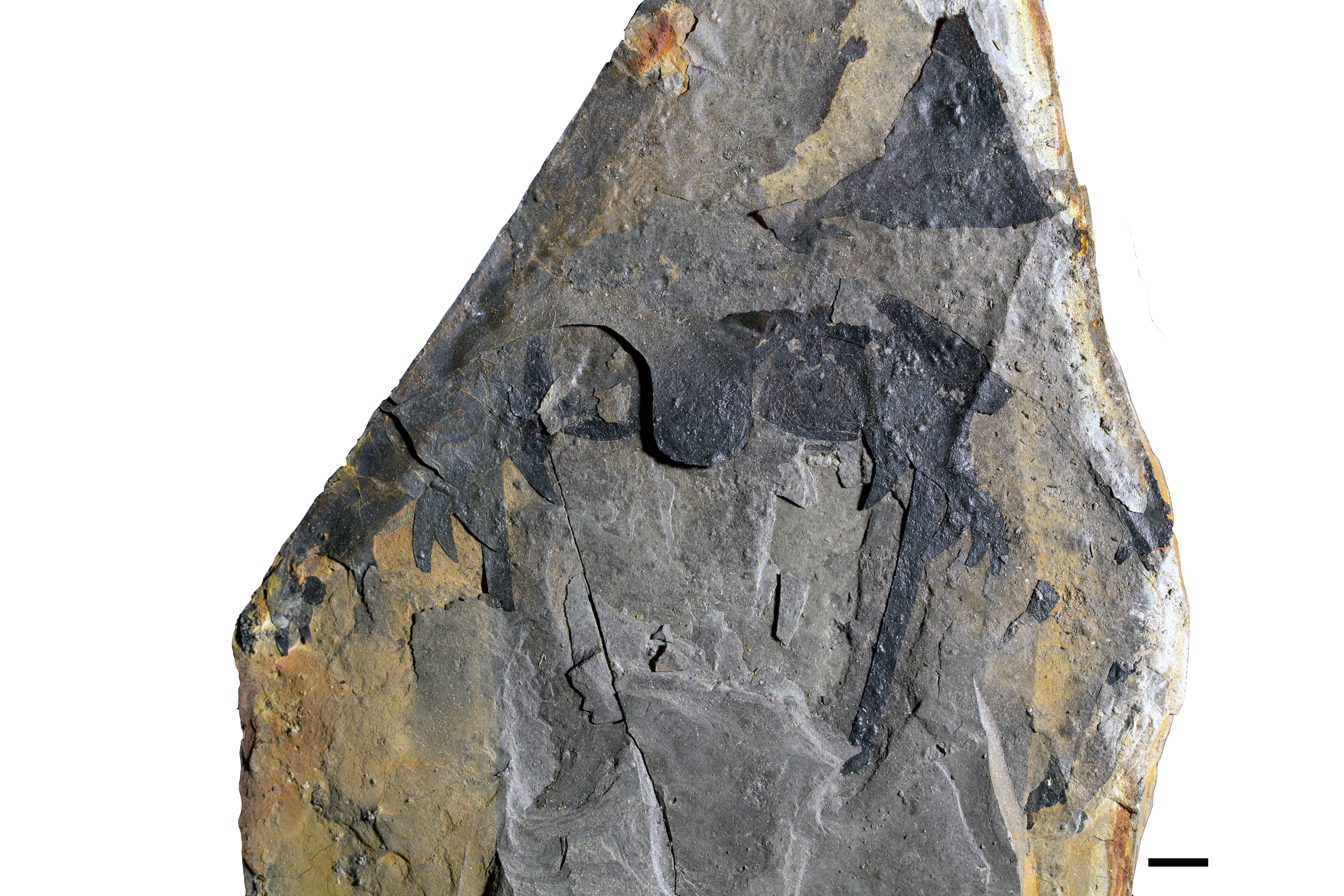
This, believe it or not, is the holotype of the new eurypterid Pentecopterus decorahensis. The specimens are mostly fragmentary, so understanding and recreating the complete morphology was a difficult process.
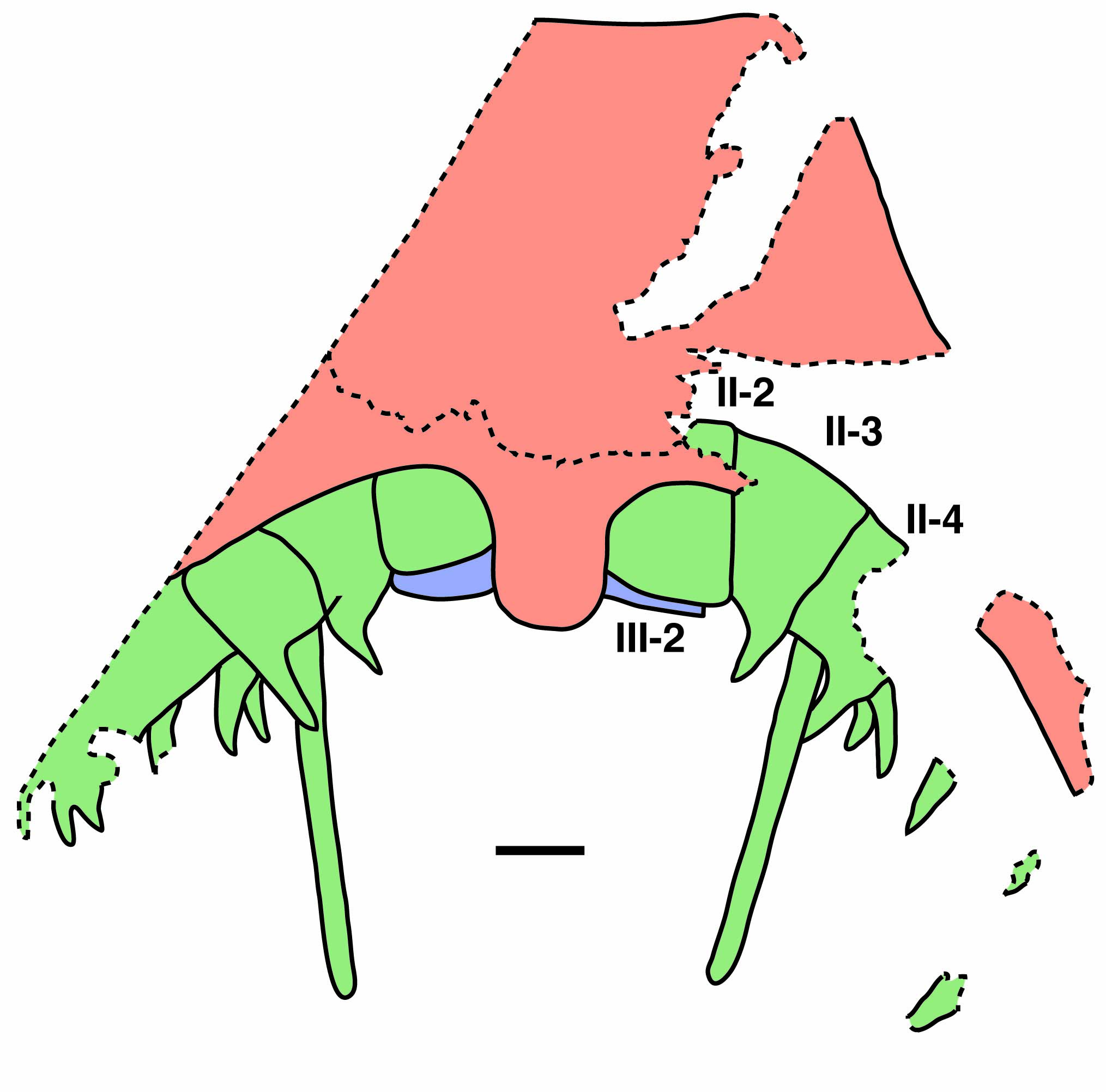
What we’re seeing is the underside of the head shied (Red), labelled C in the previous image with the reconstruction. There are also two appendages (green) preserved below it, these can be identified by their long individual spine as the second limb.
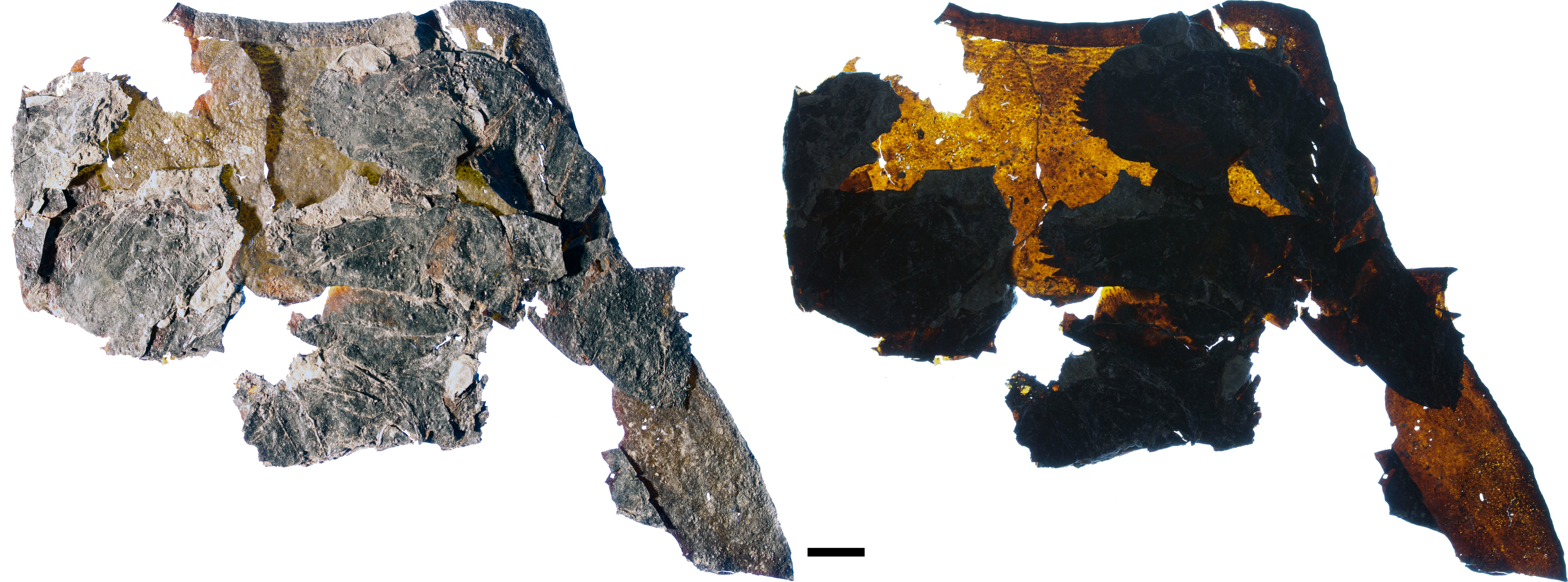
Fortunately, the conditions of the Winneshiek lagerstätte were such that the eurypterid exoskeletons were exquisitely preserved (albeit chemically altered). They were able to be lifted from the rock and study, using back-lighting, was able to reveal intricate detail. Note the silhouetted ‘teeth’ at the ends of each leg (see next image) in the centre of the back-lit specimen.
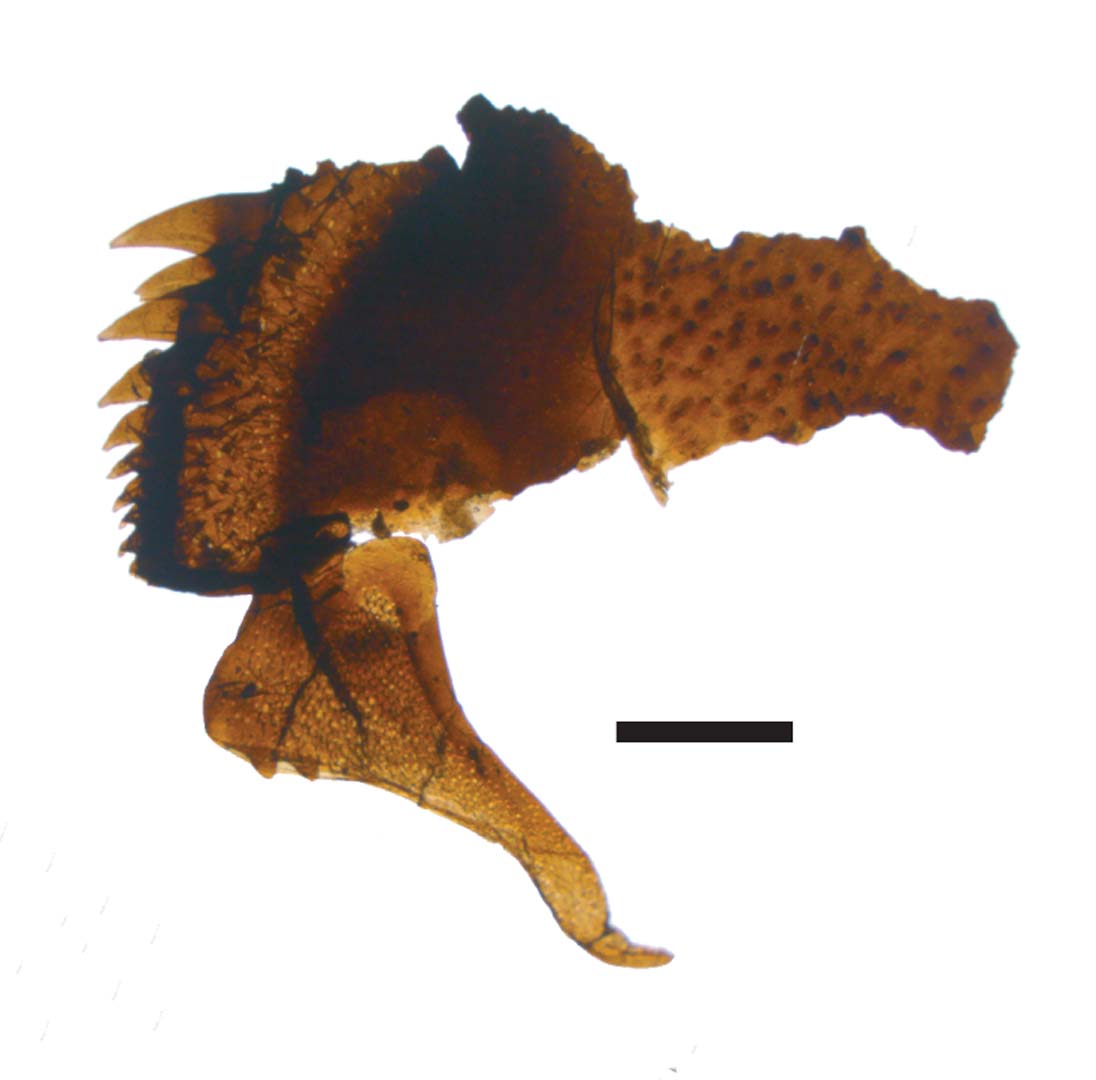
Fragment of the first segment of one of the appendages. This first section of the leg is called a coxa and it functioned as the ‘teeth’ of the eurypterid. Along its inner edge were rows of robust spikes. All the coxae of the appendages faced towards the mouth and it would ‘chew’ by moving its legs around. Imagine having spikes on the inside of your shoulder blades and rotating your shoulders. Scale 10 mm
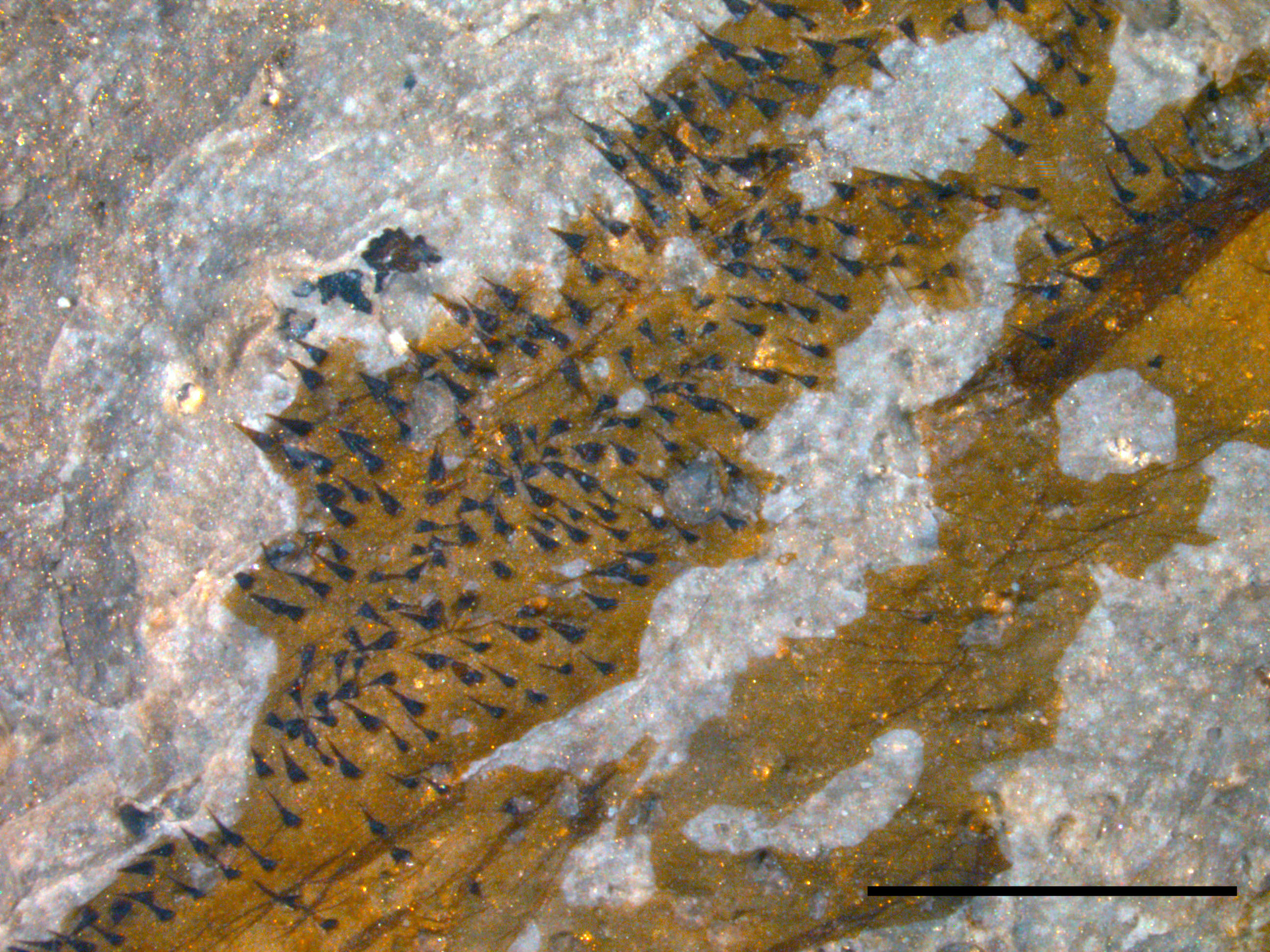
Even though incomplete and fragmentary, the preservation was good enough to be able to preserved hairs. These were particularly robust hairs that covered the lower surface of the head. It is possible that they were chemo-sensory, giving Pentecopterus taste and they could also have assisted in the preferential movement of food towards the mouth.
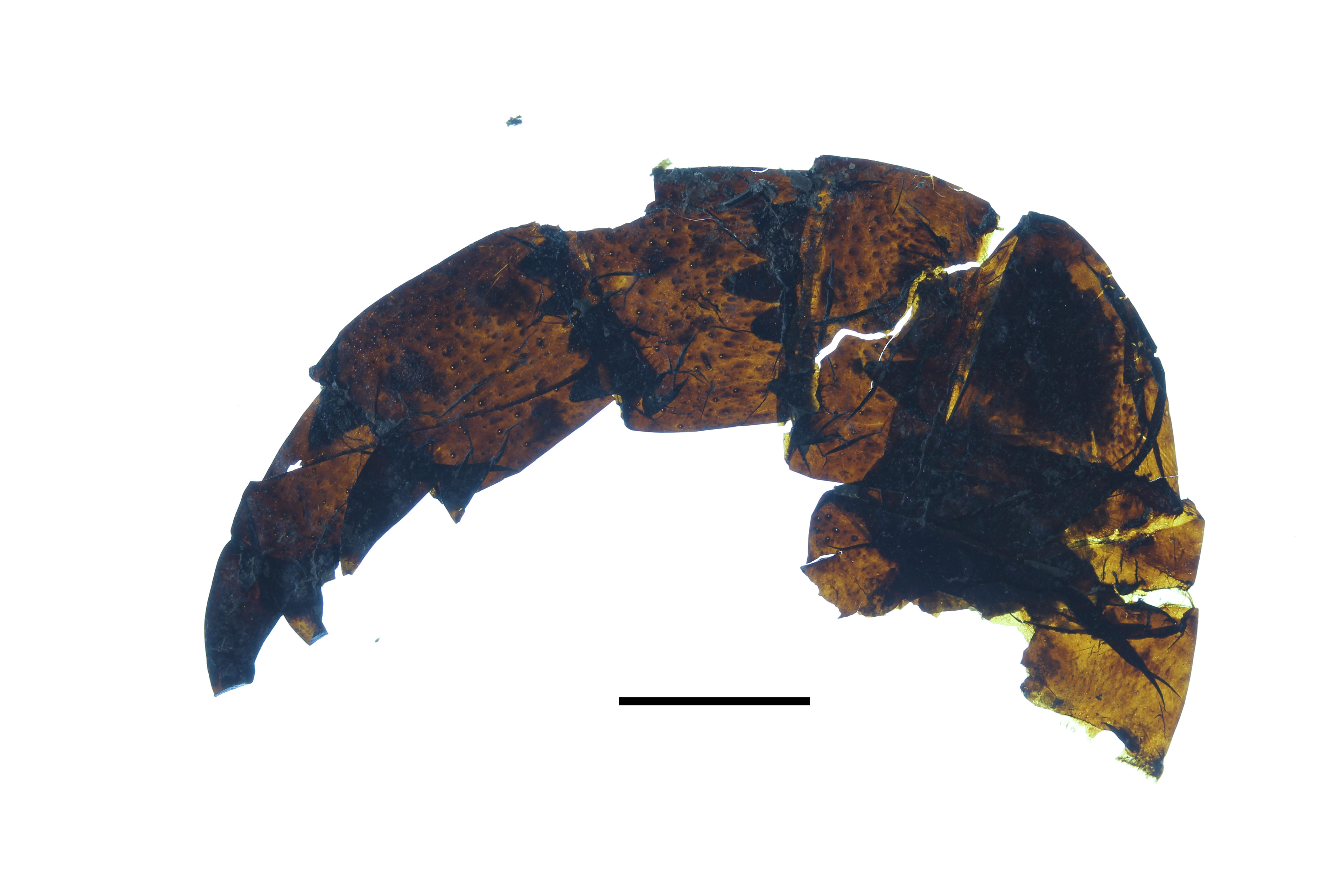
Other kinds of hair were observed when using the back-lighting technique. Here you can see the sockets (tiny holes) where sensory hairs would have inserted into one of the legs.
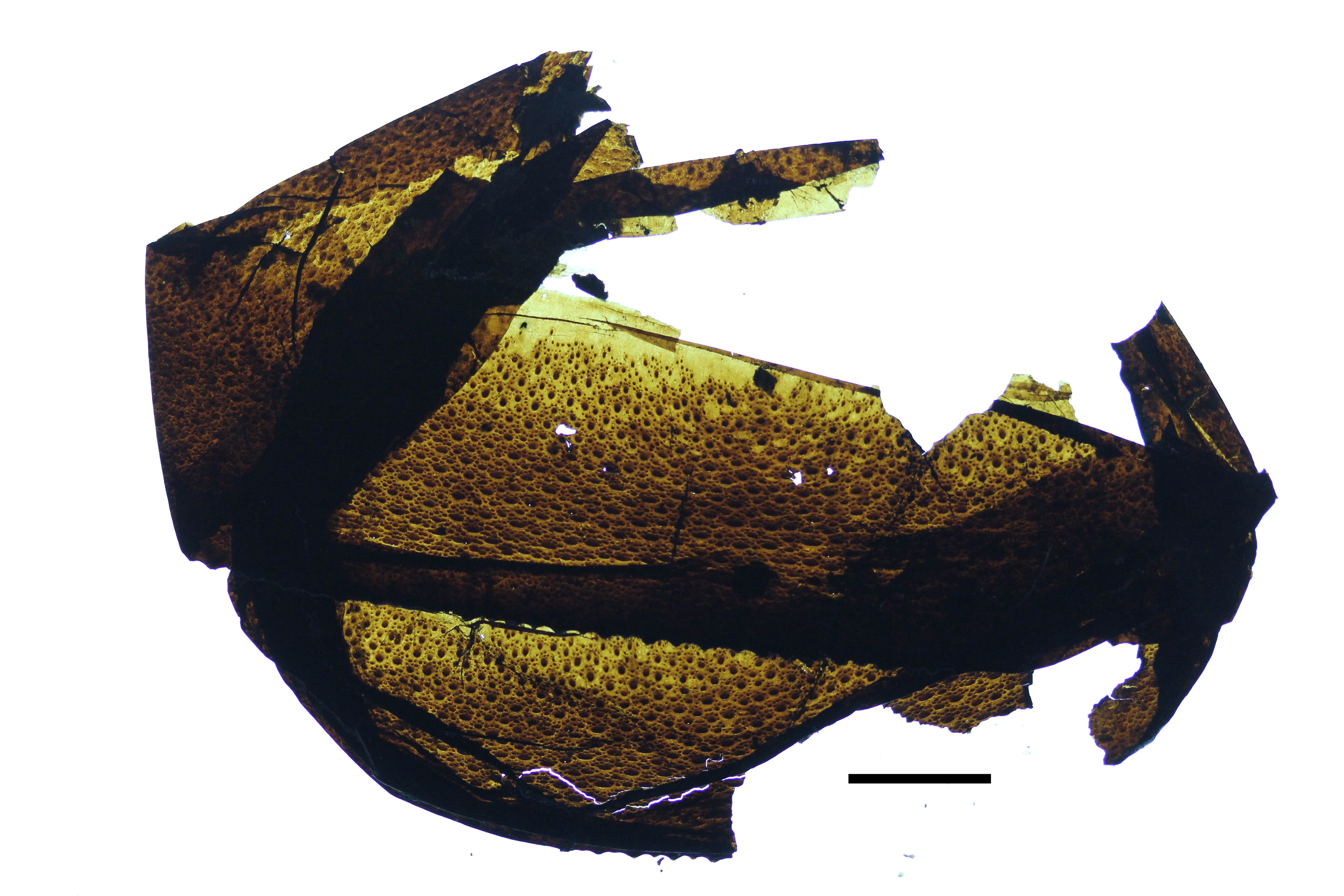
Even on the body, details such as the gradation of ornament (a ‘texture’ caused by thickening of the cuticle) can be observed. On these two segments, the upper area possesses a smooth area (for articulation), followed circular ornament that progressively gets more crescentic towards the posterior margin. Many of these cuticular thickenings are found in association with sockets for tiny hairs.
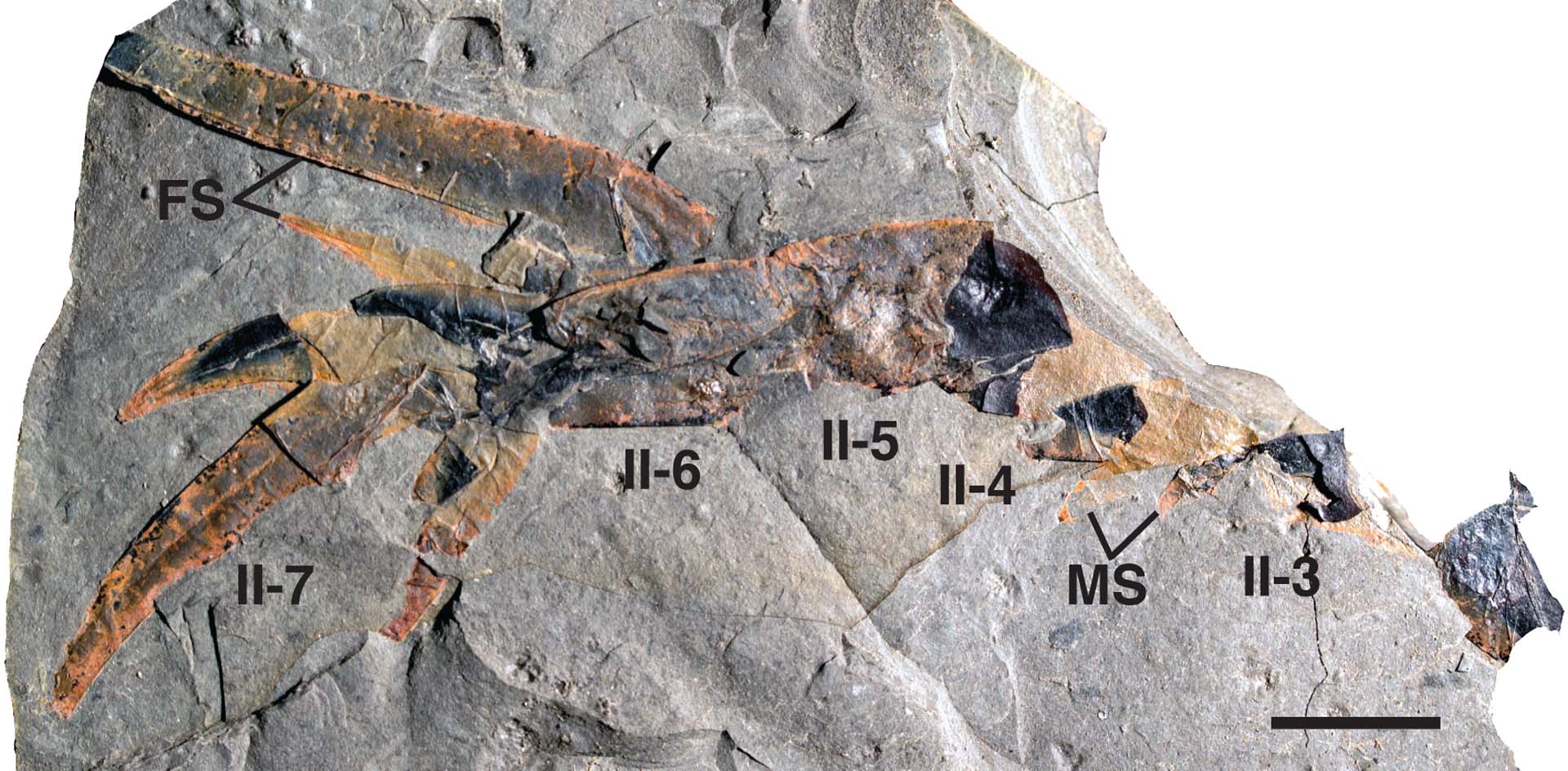
Additional to the shape of the ornamentation is the modification of the limbs. Pentecopterus can be seen to have spinous legs, the kind used in prey capture. This is most similar to the Ordovician group, the megalograptids.
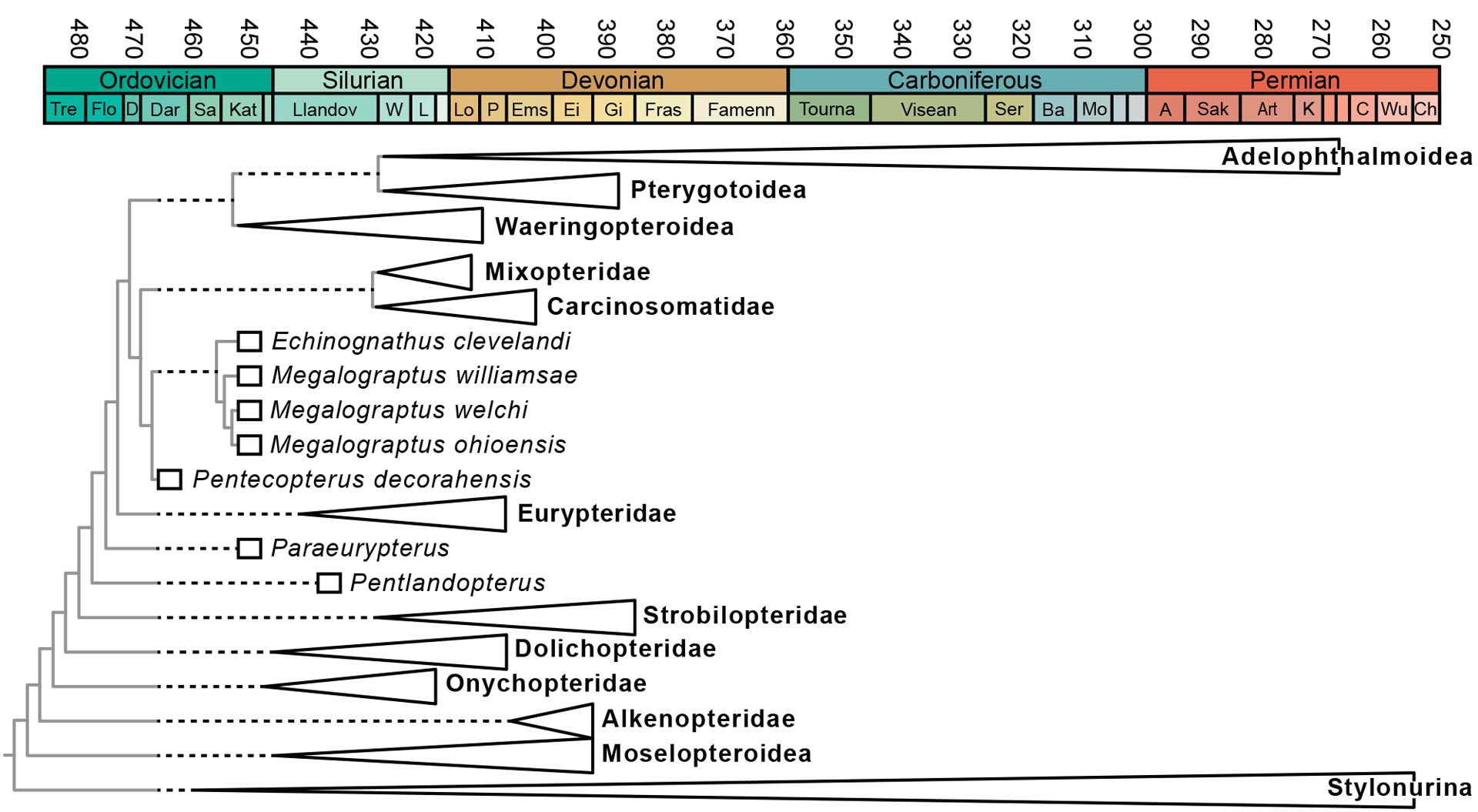
A new phylogenetic analysis, shows that from what we now know about Pentecopterus, we are able to include it (and the other megalograptids) along with the Mixopteridae and the Carcinosomatidae as ‘carcinosomatiods’. This moves Pentecopterus away from the base of the tree and places it towards the top. The implication of this is that all lower branches of the tree must occur before we see the first fossil evidence of Pentecopterus. This increases the ‘ghost-ranges’ of every other group back in time. Since they must have evolved earlier, if we look in rocks of Ordovician range, we should be able to find these missing groups’. Pentecopterus, though the earliest-yet found eurypterid, can’t be the absolute oldest.
Unless otherwise stated, all images courtesy of James Lamsdell and all scales 1 cm.

